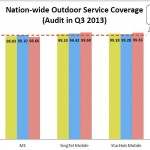Mobile advertising budgets worldwide are set for a raise, with IT research firm Gartner forecasting industry spending to reach US$18 billion in 2014, a 37 per cent increase from last year’s estimated US$13.1 billion.
Gartner also projects the market to be worth US$41.9 billion by 2017, with growth between 2015 and 2017 fuelled by improved market conditions such as provider consolidation, measurement standardisation, new targeting technologies and sustained interest by advertisers.
But while all regions of the world are expected to see strong growth in the industry, it will not be distributed equally. North America, with a shift of its massive advertising budgets towards the mobile platform, will enjoy the most growth, Gartner revealed last week.
On the other hand, Japan and the Asia Pacific, currently the most mature region for mobile advertising, can expect growth to slow at an average of 30 per cent a year between 2012 and 2017, a result of the early adoption of smart devices in Japan and South Korea.
Categorically, Gartner estimates mobile video ads to register the highest growth due to the strong tablet market, while the strong growth of in-app ads over the last several years are expected to give way to mobile Web ads.
In addition, location data gathered from users via their devices or checking into places using apps like Foursquare and Pinterest will drive search and map advertising.
What do all these changes mean for consumers? One trend seems to be certain – ads popping up in your smartphones and tablets look set to only become more common.







